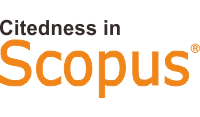Movie Induced Tourism in the Young Millennials Tourist Segment
DOI:
https://doi.org/10.35313/jtos.v1i1.1Keywords:
movie induced tourism, millenials, movie attribute, tourist destinationAbstract
This research is motivated by the considerable potential and market share of millennials as a tourism target market. The promotion strategy of a tourist destination is carried out through innovative media, one of which is through movie media or empirically known as the concept of Movie Induced Tourism. This research was conducted to determine the effect of movies on millennial tourist visits, applying descriptive quantitative research methods. Questionnaires were used as data collection techniques to obtain primary data and through journals and e-book to get secondary data. SEM-PLS has been applied to measure relationships between variables and research models. The results of this study are that movies attributes can have a significant positive effect on personal connections and AIDA Model.
References
Bae, E. s. O., Chang, M., Park, E. S., & Kim, D. C. (2017). The effect of Hallyu on tourism in Korea. Journal of Open Innovation: Technology, Market, and Complexity, 3(4). https://doi.org/10.1186/s40852-017-0075-y
Busby, G., & Klug, J. (2001). Movie-induced tourism: The challenge of measurement and other issues. Journal of Vacation Marketing, 7(4), 316–332. https://doi.org/10.1177/135676670100700403
Crompton, J. L. (1979). Motivations for pleasure vacation. Annals of Tourism Research, 6(4), 408–424. https://doi.org/10.1016/0160-7383(79)90004-5
García, Á. P., Rodríguez, I. S., & Melgarejo, A. M. (2021). The Development of the Competency of "Cultural Awareness and Expressions" Using Movie-Induced Tourism as a Didactic Resource. 11(315), 1–9.
Hair, J. F., Risher, J. J., Sarstedt, M., & Ringle, C. M. (2018). The Results of PLS-SEM Article information. European Business Review, 31(1), 2–24.
Kim, S. (Sam), Kim, S. (Sean), & King, B. (2019). Nostalgia film tourism and its potential for destination development. Journal of Travel and Tourism Marketing, 36(2), 236–252. https://doi.org/10.1080/10548408.2018.1527272
Kim, S. (Sam), Kim, S. (Sean), & Petrick, J. F. (2019). The Effect of Film Nostalgia on Involvement, Familiarity, and Behavioral Intentions. Journal of Travel Research, 58(2), 283–297. https://doi.org/10.1177/0047287517746015
Marafa, L. M., Chan, C. S., & Li, K. (2020). Market Potential and Obstacles for Film-Induced Tourism Development in Yunnan Province in China. Journal of China Tourism Research. https://doi.org/10.1080/19388160.2020.1819498
Michael, N., Balasubramanian, S., Michael, I., & Fotiadis, A. (2020). Underlying motivating factors for movie-induced tourism among Emiratis and Indian expatriates in the United Arab Emirates. Tourism and Hospitality Research, 20(4), 435–449. https://doi.org/10.1177/1467358420914355
Ministry of Tourism. (2019). Renstra Kementerian Pariwisata 2015 - 2019. Kementerian Pariwisata, September 2015, 1–100.
Page, S. J. (2019). Tourism Management. Routledge.
Pearce, D. (2012). Frameworks for Tourism Research. In Frameworks for Tourism Research. https://doi.org/10.1016/j.annals.2013.02.005
Pike, S. (2008). Destination marketing: An integrated marketing communication approach in Tourism Management.
UNWTO. (2019). International Tourism Highlights International tourism continues to outpace the global economy. UNWTO, 1–24.
Veal, A. J. (1994). Research Methods for Leisure and Tourism. In Annals of Tourism Research (5th ed., Vol. 21, Issue 4). Pearson Education Limited. https://doi.org/10.1016/0160-7383(94)90104-x
Wong, I. K. A., Law, R., & Zhao, X. (Roy). (2018). Time-Variant Pleasure Travel Motivations and Behaviors. Journal of Travel Research, 57(4), 437–452. https://doi.org/10.1177/0047287517705226
Downloads
Published
Issue
Section
License
Copyright (c) 2021 Eko Susanto, Azizah Salsabila Nugraha, Annisa Rachmah Fujianti, Ayu Ananda

This work is licensed under a Creative Commons Attribution 4.0 International License.



.png)
















